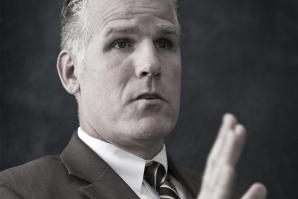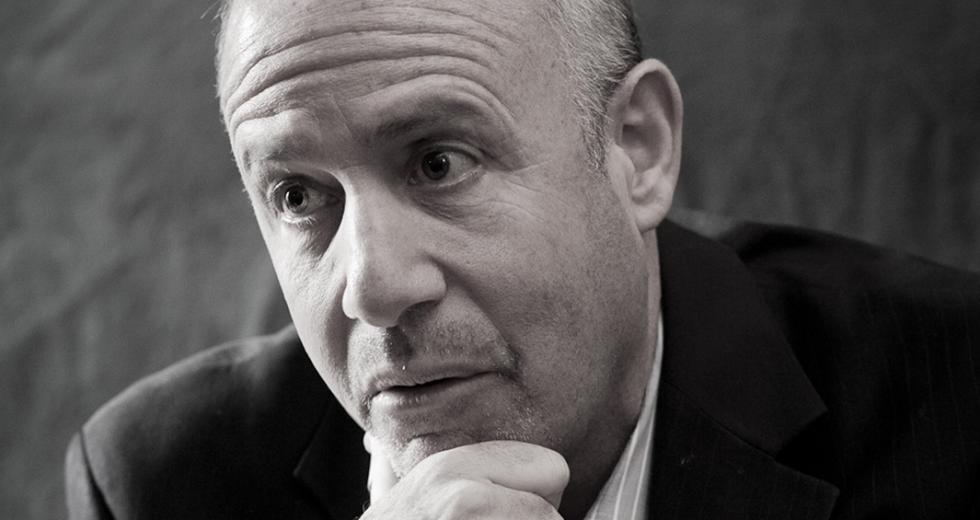Over the past two decades, Darrell Steinberg has become synonymous with Sacramento government, representing residents on the City Council, in the Assembly and, since 2006, in the Senate. In 2008, he became the first Sacramento-based leader of that chamber since 1883.
In the five years since, Steinberg has been front and center on some of the biggest issues facing the state and our region, from historic land-use reform to mental health care funding. We sat down with him to discuss his current legislative priorities and possible future plans as he enters his final year in the Senate.
How time flies. Have you mentally accepted that this will be your last year in the Legislature?
I’ve actually been preparing for some time. With term limits, you always know from the very beginning that, kind of like life itself, it doesn’t last forever. But, I’ve had one of the longest continuing runs of anybody. I know I will miss it, but I’m also looking forward to whatever the next chapters are in my life. This job has many upsides: the ability to influence policy and to know that your work led to people’s lives being improved. But it is all-consuming as well. I’m also not out yet! I’ve led through four years of hell in California, with terrible budgets and multi-billion-dollar deficits. Now, we have some better times and better budgets, and I want two full years to be able to lead during a better period and get some positive things done.
Yes, for much of your tenure, California has been buried in massive deficits. Now we have a solid budget surplus. The governor has made it clear he wants to hold the line on spending, but many of your constituents are clamoring to restore spending that was cut in the lean years. That being the case, what are your legislative priorities for this year?
No. 1 is that we have to live within our means. Nobody wants to go back to 2009. That was a horrendous period. Having said that, while it’s true that we cannot spend irresponsibly, I think there’s equal danger in being so cautious that we fail to invest in people and the economy. Last year, post-Proposition 30 (a sales and income tax increase initiative), we had a reasonable surplus. This year, the Legislative Analyst’s Office says we’re going to have an even larger surplus. But we know we also have obligations to pay down the wall of debt, to pay for obligations like pensions and retiree health care and to put money in a rainy-day fund. The LAO tells us that even with doing that, there should be enough resources available to invest in strategic and key priorities.
You’ve always been a vocal advocate for improving the state’s mental health care. Any other passions you will focus on this year?
Mental health has been my passion and continues to be, but if there’s one thing on an equal footing for me, it’s this notion of career pathways and linked learning.
This is a message to the business community. We were able in the budget last year to get a quarter of a billion dollars for career pathway partnerships beginning in high school. I traveled to Switzerland last fall and I saw the European model of apprenticeship education wherein many young people have three days a week paid apprenticeships in industry, two days a week or so of classroom learning, and it’s all integrated together. It’s not necessarily just a tech path, either. The kids on the apprenticeship pathway can switch and go to college with little hassle.
Here in Sacramento, I would like to see the business community and Next Ed (a regional nonprofit partnership focused on academic and economic objectives) put us on the cutting edge of this unprecedented investment and transform high school education so that every young person has a pathway to success.
There is no reason why, in a state with our innovation and advances, we can’t develop multiple ways to teach core academic classes that relate to career interests — why algebra cannot be taught in ways that relate to the health care field or the construction field or to the biotech field or the culinary arts. There’s no reason why history and English and these subjects can’t be taught in a way that we make it relevant, and then we add the opportunity for workplace learning for young people as early as (age) 15. That to me is the future. It’s the most important education reform we could accomplish.
You made a significant effort last year to reform the California Environmental Quality Act, CEQA. That effort was not successful. Will you make another attempt? If so, what will you do differently?
Let me take a respectful disagreement with the premise of the question, because we did get something significant done. It’s all a matter of expectations here. We dealt with probably the most pressing issue of litigation around CEQA by changing the archaic way that traffic impacts are analyzed in CEQA documents.
And then, in Sacramento, given the importance of our downtown sports and entertainment project, we are going to limit the ability of Seattle — or any other opponent who wants us to lose this asset — from being able to enjoin the project without a reduction in the environmental review or the amount of mitigation that has to be done at the end.
Now, there’s always improvement that can be made with the law. I think the problem is that, in 2012, the approach put forward by then-Senator Rubio to replace CEQA with an across-the-board, standards-based approach created an expectation that could never be delivered.
Yes, let me correct myself. It’s not that you didn’t get anything done at all, but that you weren’t able to get to where you were trying to go.
There’s always more to do. But No. 1, it’s a great law. But for many people, the real issue of CEQA is the motive of the litigant. Well, under our system of civil justice and the constitution, you can’t tell somebody that they can’t make a challenge just because you disagree with their motive. Right or wrong, that’s the reality.
The reason why the issue is so challenging is because, if you take any key provision of CEQA, you will find legitimate examples of where the provision has been used to save a precious resource or the environment. You’ll also find an example where it has been used inappropriately to hold up a project that everybody agrees ought to get done. And that’s the challenge. What happens more, the former or the latter?
Doing a major thing, like replacing the way we analyze traffic, will reduce the amount of that litigation. I thought we found the right balance. Is there more work to do? There’s always going to be more work to do.
We all know the tortured history of the bond that was a major part of the historic 2009 water agreement you helped to broker. That bond has been delayed from going before voters twice now. Most of us expect that if it finally shows up on the ballot in 2014, it’s going to be very different than what it started as. What’s your perspective on this?
We ought to modify the bond and get it to the ballot as soon as possible. But there’s a more fundamental issue of figuring out the touchy relationship between the bond and the Bay Delta Conservation Project.
I have made the argument that, even though they are functionally separate, in reality they are connected. I think it is going to be very difficult to put together a winning constituency for a bond unless there is some resolution on this project and vice versa.
Even though the (conveyance) tunnels themselves are proposed to be paid for by the beneficiaries (in Southern California), there’s a lot of mitigation in delta ecosystem restoration where the bond could be helpful. So, the two practically go together. But, I think the key issue is trust. In 2009, I was not afraid as a statewide leader to say, ‘Come on, water is a statewide resource. Water rights are important, but we’ve got to look at the big picture here.’ It’s not that I’ve changed my mind but I see a little bit of the other side here, too.
If the BDCP gets built, what is the guarantee that the operational rules in year one — i.e. how much water is going to flow through these tunnels, and how much water is going to be preserved for ecosystem restoration — are going to remain the rules of operation in year 30 and year 40 and year 50? How do we know there isn’t going to be a different governor or water board or legislature that’s going to say, ‘We know we had an agreement that limited the amount of water flowing from north to south, but now we’re going to change the rules of the game.’
That’s the question. If we can find a guarantee that’s binding — and I don’t know what that guarantee is — I think that would then go a long way towards finishing the work that we accomplished in 2009.
There has been speculation that you would consider running for mayor at some point in the future. Is that something you are interested in?
I really don’t know exactly what my future holds. I have had an incredibly rich and positive experience, and I have gotten a lot done on some key priorities. So I’d like to continue in elected office, but I’m looking forward to stepping out for a little while, too. I’d like to focus on a few other things without losing my touch or focus on some of the issues that I’ve worked on. So we’ll see what happens. We will see what opportunities open up.
Recommended For You

Realign. Redevelop.
Counties director Matt Cate thinks California is righting its course
No one can accuse Matt Cate of avoiding the hard jobs. During his four years at the helm of California’s state prisons, he guided the system through some of its toughest times, including historic budget cuts and the implementation of Gov. Jerry Brown’s controversial 2011 realignment plan, which shifted tens of thousands of offenders to local jails and parole supervision.




